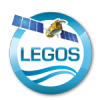
- Cet évènement est passé.
Antartic Bottom Water on the Finite-volume Sea ice Ocean Model (FESOM)
28 novembre 2024 @ 14h00 - 17h00
– Daniel M Costa Santos, Alfred Wagner Institute –
Résumé :
The Antarctic Bottom Water (AABW) is the deepest, densest, and coldest water in the global ocean. Its distinctive properties and formation primarily result from the mixing between the colder and denser Antarctic Shelf Water and the lighter, warmer, and saltier Circumpolar Deep Water along the Antarctic slope. Past investigations have already demonstrated shifts in AABW characteristics over recent decades, with assessments of temperature, salinity, dissolved oxygen, and layer thickness trends conducted in various regions. These studies heavily relied on in situ data for AABW evaluation. However, measuring abyssal depths is a challenging task. Until now, the predominant data sources have been moorings and decadal hydrographic sections, yet the inherent limitations of in situ data from abyssal layers arise due to low sampling rates and restricted geographical coverage. To address these temporal and spatial gaps, utilizing model and reanalysis outputs emerges as a logical solution. This study aims to investigate trends in AABW properties in high and mid latitudes at different basins worldwide using such outputs. In the initial phase of assessing AABW’s properties variability, we evaluate the capability of two reanalyses and a model in accurately representing AABW, they are: 1. Estimating the Circulation and Climate of the Ocean (ECCO); 2. Copernicus Global Oceanic and Sea Ice GLORYS; 3. JAMSTEC OFES Ocean General Circulation Model for the Earth Simulator (OFES). To validate these outputs, we employ climatology from WOA18 and in situ data from the SAMBAR project. The results indicate that ECCO has a problem with bathymetric representation, with larger values of AABW thickness (h) found in regions with greater depths, particularly in the southern portion of the Argentine Basin, in comparison to the reference WOA18. GLORYS, on the other hand, appears to misrepresent h by consistently underestimating it across all studied domains, from high to mid latitudes. On the contrary, OFES tends to overestimate h in the high latitudes but underestimate it in the mid latitudes.
